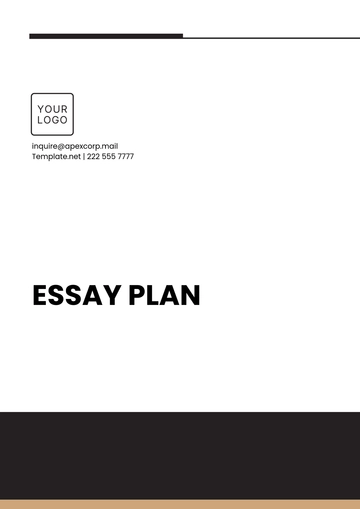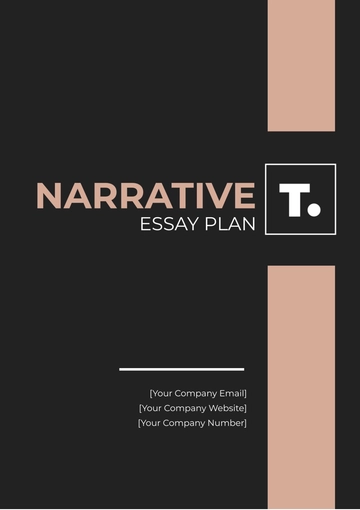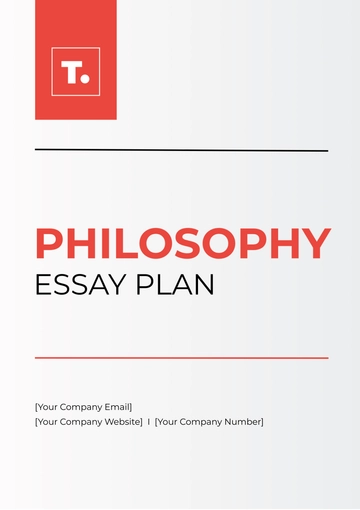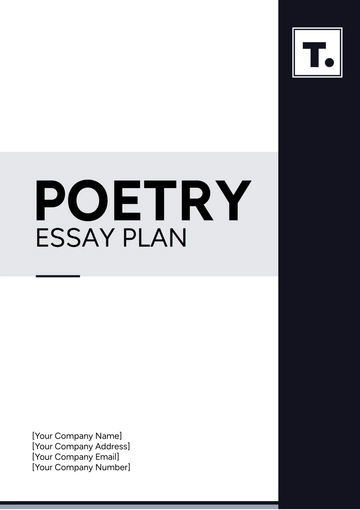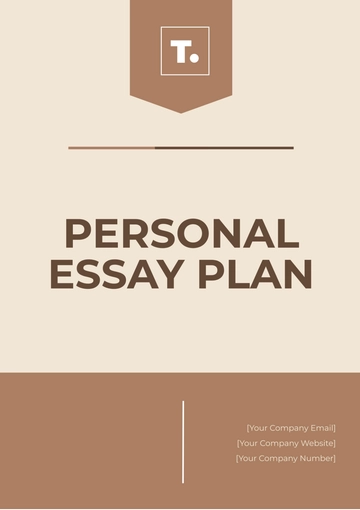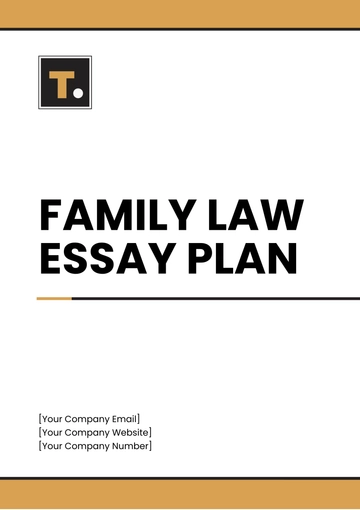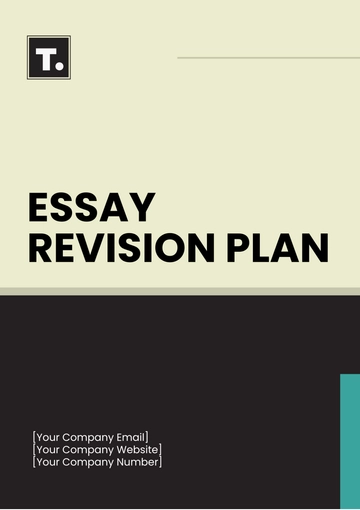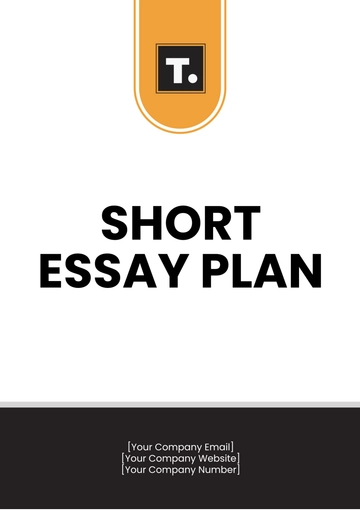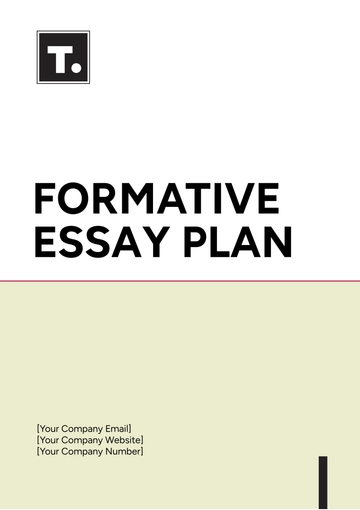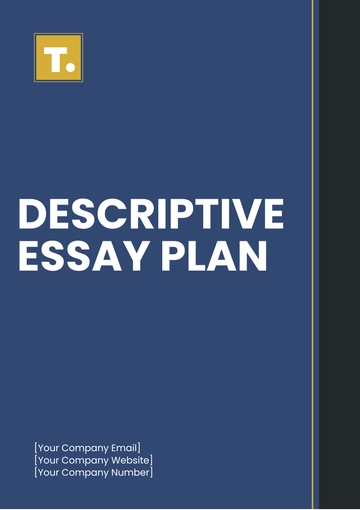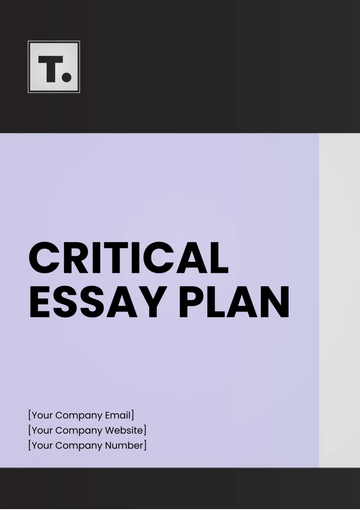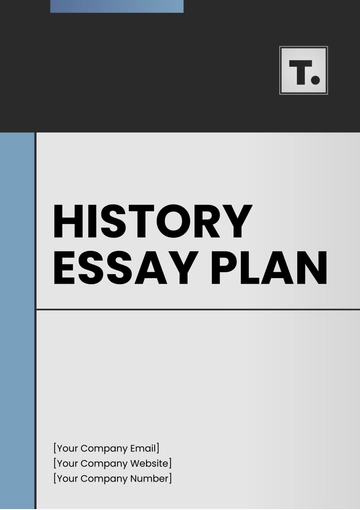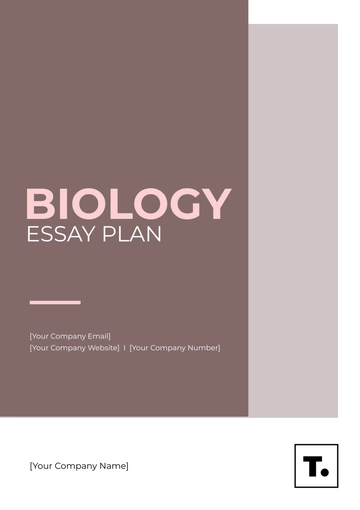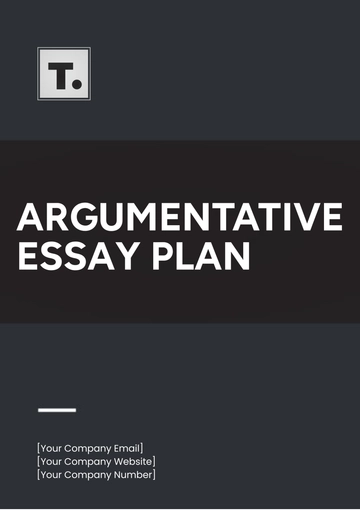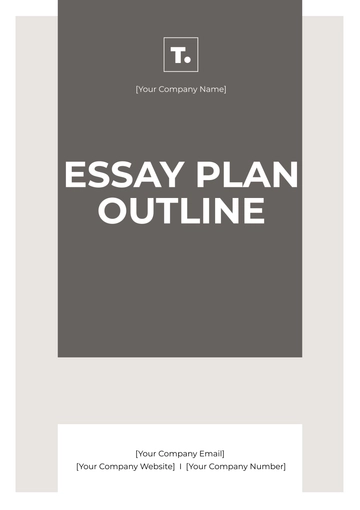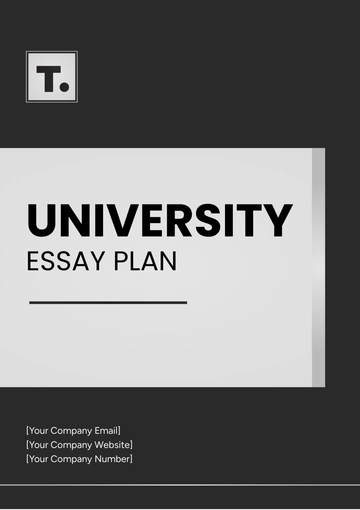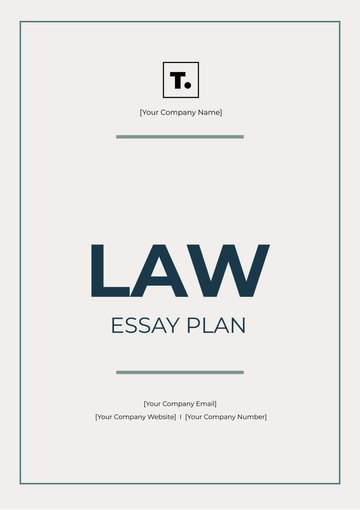Free Argumentative Essay Plan
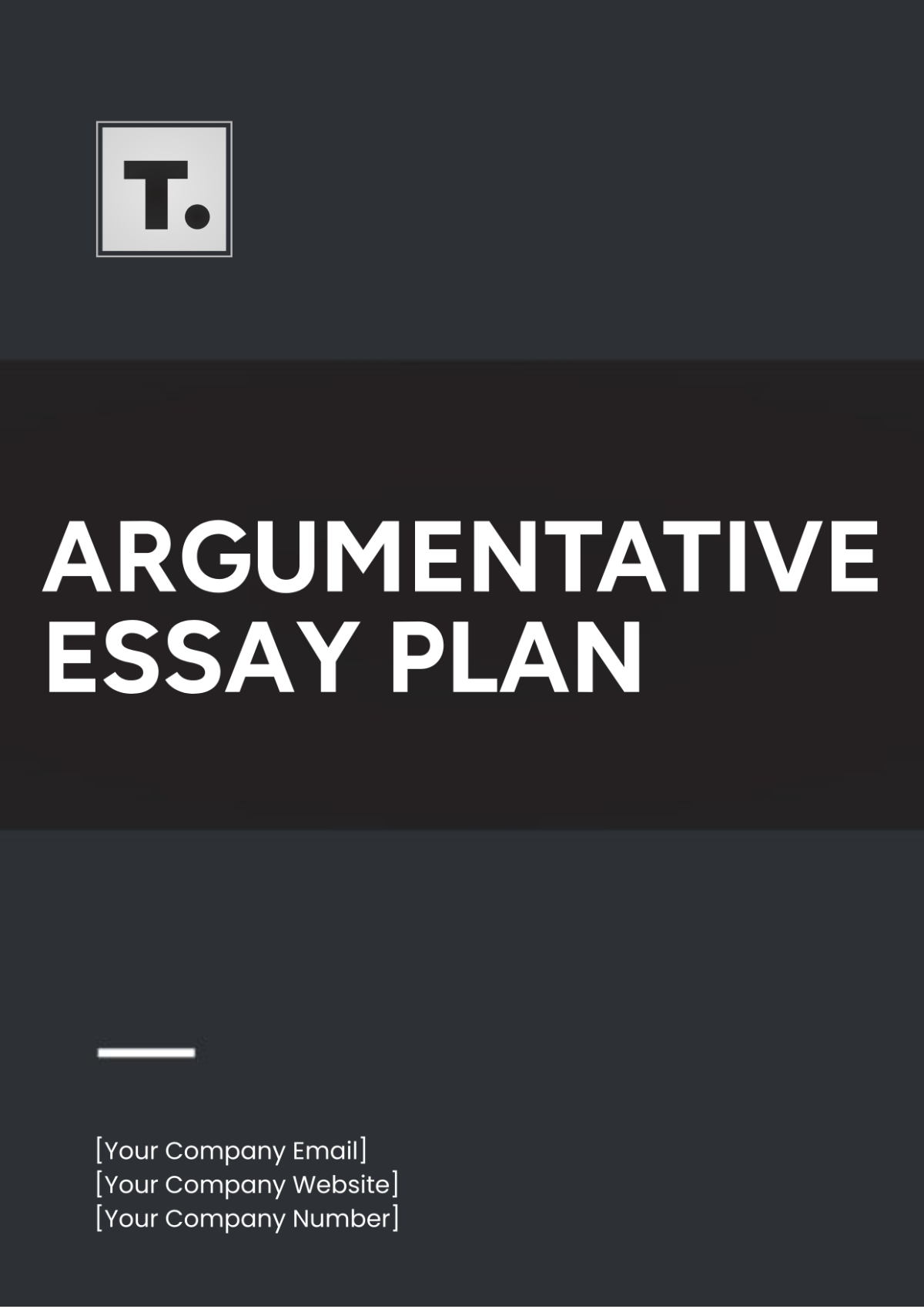
Written by: [YOUR NAME]
I. Introduction
Purpose: This plan outlines the structure for an argumentative essay that persuasively communicates your position on a controversial issue.
Student's Name: [YOUR NAME]
Instructor's Name: [INSTRUCTOR'S NAME]
Course Title: [COURSE TITLE]
Due Date: June 6, 2050
Essay Topic: [ESSAY TOPIC]
Thesis Statement: [THESIS STATEMENT] - A concise statement that presents your argument and the stance you will defend.
II. Presentation of Arguments
A. Main Argument
Point: [MAIN ARGUMENT] - The primary reason supporting your thesis, which forms the cornerstone of your essay.
Evidence: Provide substantial and credible evidence that supports this argument, including statistics, quotes from authorities, and empirical research findings.
B. Supporting Argument
Point: [SECONDARY ARGUMENT] - A supplementary argument that reinforces and adds depth to your main point.
Evidence: Include additional data, examples, or scholarly work that backs up this secondary argument.
III. Counterargument and Rebuttal
Counterargument: Identify the strongest opposing view to your thesis. Describe this perspective fairly and objectively.
Rebuttal: Craft a well-reasoned response that addresses the counterargument, demonstrating why your original stance is more valid and compelling. Utilize evidence and logic to undermine the opposing viewpoint.
IV. Argument Development and Analysis
Linkages: Show how your arguments interconnect and support one another, building a cohesive narrative that enhances the persuasiveness of your thesis.
Critical Analysis: Provide a detailed examination of the implications of your argument, discussing potential weaknesses and how they are addressed.
V. Conclusion
Summary: Recapitulate your main arguments and the counterarguments, reinforcing how your rebuttals uphold your thesis.
Final Thought: Conclude with a strong statement or question that highlights the significance of your argument and encourages further reflection or action.
VI. References
Citation Style: Ensure all sources are cited according to [PREFERRED CITATION STYLE].
Sources: List all the academic sources, articles, and data you have used to build and support your arguments. This includes books, peer-reviewed articles, and official reports.
- 100% Customizable, free editor
- Access 1 Million+ Templates, photo’s & graphics
- Download or share as a template
- Click and replace photos, graphics, text, backgrounds
- Resize, crop, AI write & more
- Access advanced editor
Craft compelling argumentative essays effortlessly with the Argumentative Essay Plan Template from Template.net. This versatile resource is fully editable and customizable, allowing you to tailor your essay structure to perfection. Seamlessly integrate your ideas using our Ai Editor Tool, ensuring a polished and persuasive final product. Elevate your writing game today!
You may also like
- Finance Plan
- Construction Plan
- Sales Plan
- Development Plan
- Career Plan
- Budget Plan
- HR Plan
- Education Plan
- Transition Plan
- Work Plan
- Training Plan
- Communication Plan
- Operation Plan
- Health And Safety Plan
- Strategy Plan
- Professional Development Plan
- Advertising Plan
- Risk Management Plan
- Restaurant Plan
- School Plan
- Nursing Home Patient Care Plan
- Nursing Care Plan
- Plan Event
- Startup Plan
- Social Media Plan
- Staffing Plan
- Annual Plan
- Content Plan
- Payment Plan
- Implementation Plan
- Hotel Plan
- Workout Plan
- Accounting Plan
- Campaign Plan
- Essay Plan
- 30 60 90 Day Plan
- Research Plan
- Recruitment Plan
- 90 Day Plan
- Quarterly Plan
- Emergency Plan
- 5 Year Plan
- Gym Plan
- Personal Plan
- IT and Software Plan
- Treatment Plan
- Real Estate Plan
- Law Firm Plan
- Healthcare Plan
- Improvement Plan
- Media Plan
- 5 Year Business Plan
- Learning Plan
- Marketing Campaign Plan
- Travel Agency Plan
- Cleaning Services Plan
- Interior Design Plan
- Performance Plan
- PR Plan
- Birth Plan
- Life Plan
- SEO Plan
- Disaster Recovery Plan
- Continuity Plan
- Launch Plan
- Legal Plan
- Behavior Plan
- Performance Improvement Plan
- Salon Plan
- Security Plan
- Security Management Plan
- Employee Development Plan
- Quality Plan
- Service Improvement Plan
- Growth Plan
- Incident Response Plan
- Basketball Plan
- Emergency Action Plan
- Product Launch Plan
- Spa Plan
- Employee Training Plan
- Data Analysis Plan
- Employee Action Plan
- Territory Plan
- Audit Plan
- Classroom Plan
- Activity Plan
- Parenting Plan
- Care Plan
- Project Execution Plan
- Exercise Plan
- Internship Plan
- Software Development Plan
- Continuous Improvement Plan
- Leave Plan
- 90 Day Sales Plan
- Advertising Agency Plan
- Employee Transition Plan
- Smart Action Plan
- Workplace Safety Plan
- Behavior Change Plan
- Contingency Plan
- Continuity of Operations Plan
- Health Plan
- Quality Control Plan
- Self Plan
- Sports Development Plan
- Change Management Plan
- Ecommerce Plan
- Personal Financial Plan
- Process Improvement Plan
- 30-60-90 Day Sales Plan
- Crisis Management Plan
- Engagement Plan
- Execution Plan
- Pandemic Plan
- Quality Assurance Plan
- Service Continuity Plan
- Agile Project Plan
- Fundraising Plan
- Job Transition Plan
- Asset Maintenance Plan
- Maintenance Plan
- Software Test Plan
- Staff Training and Development Plan
- 3 Year Plan
- Brand Activation Plan
- Release Plan
- Resource Plan
- Risk Mitigation Plan
- Teacher Plan
- 30 60 90 Day Plan for New Manager
- Food Safety Plan
- Food Truck Plan
- Hiring Plan
- Quality Management Plan
- Wellness Plan
- Behavior Intervention Plan
- Bonus Plan
- Investment Plan
- Maternity Leave Plan
- Pandemic Response Plan
- Succession Planning
- Coaching Plan
- Configuration Management Plan
- Remote Work Plan
- Self Care Plan
- Teaching Plan
- 100-Day Plan
- HACCP Plan
- Student Plan
- Sustainability Plan
- 30 60 90 Day Plan for Interview
- Access Plan
- Site Specific Safety Plan
